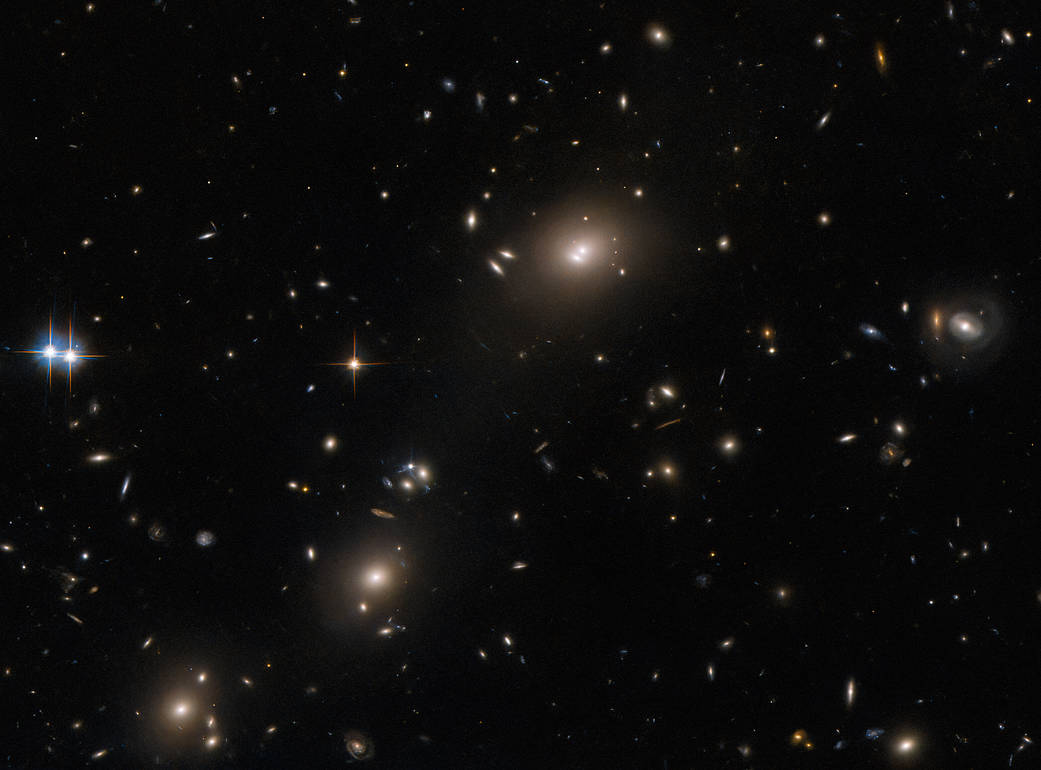A menagerie of interesting astronomical finds are visible in this image from the NASA/ESA Hubble Space Telescope. In addition to several large elliptical galaxies, a ring-shaped galaxy is lurking on the right of the image. A pair of bright stars are also visible at the left of the image, notable for their colorful crisscrossing diffraction spikes. This collection of astronomical curiosities is the galaxy cluster ACO S520, located in the constellation Pictor and captured by Hubble’s Advanced Camera for Surveys.
ACO S520 represents one of a series of Hubble observations searching for massive, luminous galaxy clusters that had not been captured by earlier surveys. Astronomers took advantage of occasional gaps in Hubble’s busy schedule to capture images of these barely explored galaxy clusters, revealing a wealth of interesting targets for further study with Hubble and the NASA/ESA/CSA James Webb Space Telescope.
Galaxy clusters are among the largest known objects in the universe. Studying these objects can provide insights into the distribution of dark matter, the mysterious substance that makes up most of the mass of a galaxy cluster.
Text credit: European Space Agency (ESA)
Image credit: ESA/Hubble & NASA, H. Ebeling
在这张NASA/ESA哈勃太空望远镜拍摄的照片中,我们可以看到一系列有趣的天文发现。除了几个大的椭圆星系外,一个环状星系潜伏在图像的右侧。在图像的左侧也可以看到一对明亮的恒星,以其彩色交叉的衍射峰而闻名。这组天文奇观是星系团ACO S520,位于绘架座,由哈勃的高级巡天相机拍摄。
ACO S520是哈勃望远镜的一系列观测之一,旨在寻找早期观测没有观测到的大质量、明亮的星系团。天文学家利用哈勃繁忙时间表中的偶尔间隙来拍摄这些几乎没有探索过的星系团的图像,揭示了大量有趣的目标,供哈勃和NASA/ESA/CSA詹姆斯·韦伯太空望远镜进一步研究。
星系团是宇宙中最大的已知物体之一。研究这些物体可以深入了解暗物质的分布,暗物质是构成星系团大部分质量的神秘物质。
文稿来源:欧洲航天局(ESA)
影像来源:欧洲航天局/哈勃和NASA, H. Ebeling



